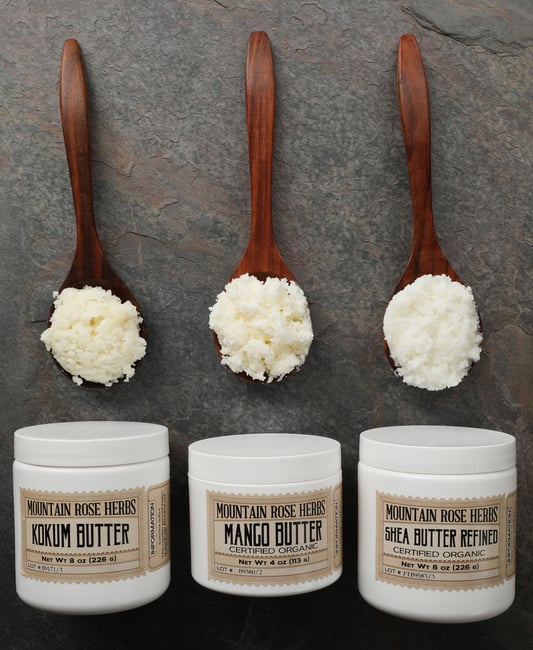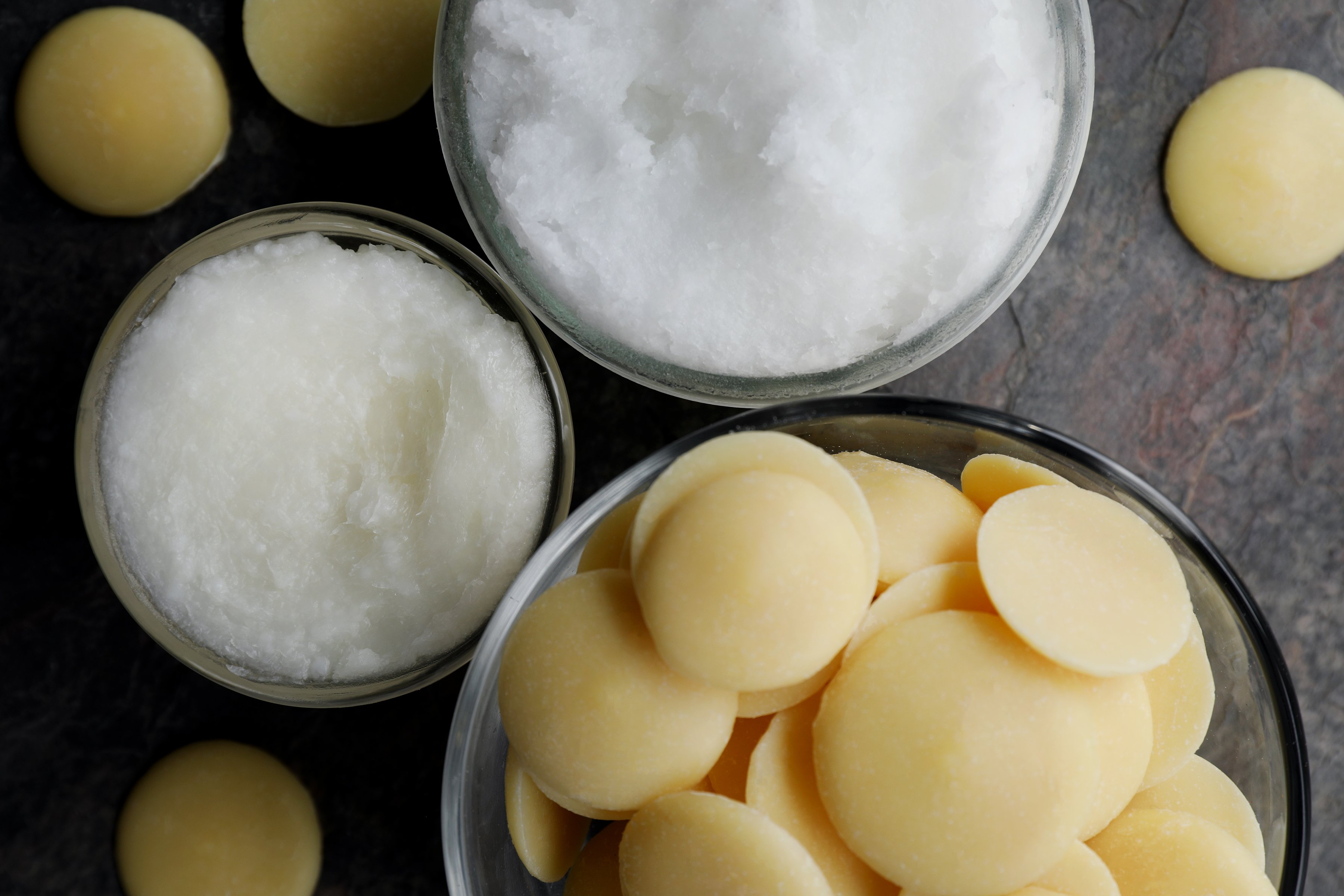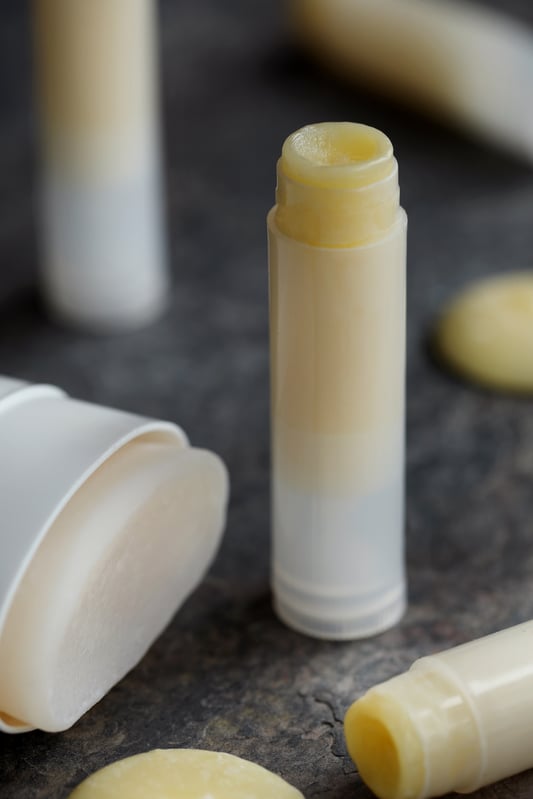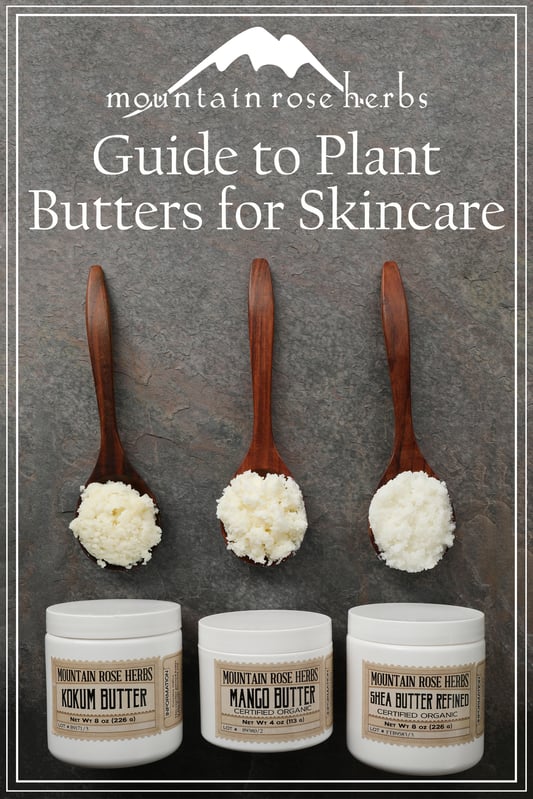High quality botanical butters are incredible assets for body care. These luscious plant fats make exceptional moisturizers on their own and also as ingredients in a wide array of skin and hair care recipes. They give your creations a beautifully creamy, smooth, and substantial viscosity. Pressed from the inner kernels, nuts, or seeds of many different plants, these butters are solid at room temperature, making them ideal for thickening up body care formulations for lotion bars, lip balms, deodorants, hair conditioners, and more! All of the butters we offer may be used interchangeably depending on your preference, allowing for endless versatility.
How to Choose the Right Body Butter
Color
The color of the butter you choose will have an effect on the appearance of your final product, so it’s a good idea to keep in mind what kind of results you hope to achieve when formulating recipes. Most plant butters are naturally yellow or cream colored. Some are white, typically the refined butters. The hues of unrefined shea butter and cocoa butter can vary from light to deep yellow-cream, depending on the batch.
Refined kokum and mango butter are great options for recipes in which you want to avoid added color. Kokum butter tends to be off-white, and mango butter will be off-white to very light cream. Refined shea butter is also a much lighter color that ranges from white to pale cream.
Scent
Botanical butters have mild aromas that tend to be nutty and/or fatty, with some having a more pronounced scent than others. For example, roasted organic cocoa butter has a sweet and chocolaty aroma that will come through in almost any recipe. Unrefined shea butter almost always has an aroma described as pungent, earthy, and nutty, and this fragrance can be difficult to mask with essential oils.
The scent of refined shea butter is much more subtle and easy to cover than its unrefined companion. Refined mango and kokum butters are other excellent options of this nature, as they have a very mild to barely noticeable aroma.
Consistency
While all our botanical butters are solid at room temperature, their texture will range from very hard to easily scoopable. Unrefined organic shea butter is quite dense and tends to have a somewhat grainy texture that can be remedied by melting the butter before use, although we have found that the natural graininess often returns over time. Refined organic shea butter tends to have a less grainy texture and is typically much softer and easier to work with than its unrefined counterpart. Both of these butters can be used straight out of the jar and will melt with body heat.
Cocoa butter is a little harder to scoop directly out of the container and melts slowly on contact with the skin. Using a double boiler or a warm water bath can help soften this butter before use. Cocoa butter wafers are also a great option for easy measuring in recipes. Each wafer equals approximately one teaspoon, and they store and pour easily. Mango and kokum butters also tend to be harder, and a warm water bath or double boiler will help to gently soften them before use.
Refined vs Unrefined Butters
Refinement processes are used to remove the natural coloring and neutralize strong aromas. Refined butters will often prove more consistent in appearance and texture, both within and between batches.
Unrefined butters sometimes contain a small amount of natural sediments left over from pressing. Their color and aroma can also vary from batch to batch due to changes in the harvest and growing seasons. If you do find sediment and want to remove it, the melted butter can be strained through cheesecloth to help filter it out.
At Mountain Rose Herbs, we offer a mix of both refined and unrefined butters so that you can choose the butter that will best suit your recipe needs!
Pro Tips:
- When formulating recipes, conserve ingredients by making small test batches to fine-tune your proportions before scaling up your batch size.
- If using butters as moisturizers right out of the jar, warm between your palms first until you feel them begin to soften and melt. This will make it much easier to distribute the plant oils over your skin.
Ready to start crafting Creamy Goodness?
Explore Our Full Selection of Pure Plant Butters!
You may also enjoy:














